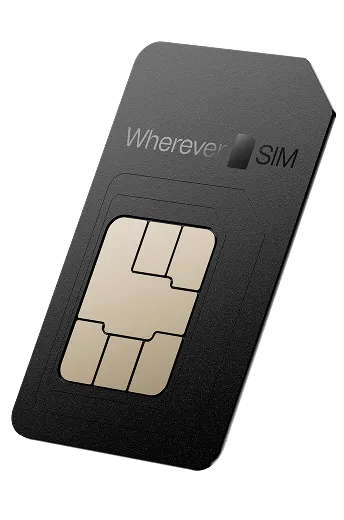
eUICC SIM cards run software that allows the SIM to be replaced remotely by overwriting the profile stored on the SIM. This software can run on the typical plastic plug-in SIM cards as well as on soldered MFF2 SIM cards(embedded SIM). However, it is not possible to upload the software to a UICC SIM at a later date.
There are currently three eUICC standards (SGP.02, SGP.22 and SGP.32) for which the profile change works differently in each case. IoT hardware must always support the respective standard in order to use it.

An eUICC M2M SIM has an overwritable SIM profile. This allows the network operator profile to be changed without physically replacing the M2M SIM.
SIM profiles can be managed and changed remotely via an online portal.
Larger storage capacity compared to UICC SIMs offers more options.
No need to replace the SIM card for profile changes/additions.
Interchangeable profiles reduce dependence on one network operator.
Benefit from local network operator benefits for data volumes >10 GB.
For IoT applications in countries with restrictions on permanent roaming.
eUICC is primarily a software functionality, not hardware. It allows SIM profiles to be changed, overwritten or added to remotely.
We offer our M2M and IoT SIM cards both with and without eUICC. We have IoT SIM cards with eUICC functionality (eUICC-ready) for all common SIM form factors, from 2FF, 3FF, 4FF to MFF2 (embedded SIM).

eUICC is not the same as eUICC: Each standard is suitable for different applications and is not compatible with other standards.
The abbreviation eSIM is usually used for both embedded SIM and eUICC, although the two mean different things. eUICC describes the software on a SIM card. An embedded SIM refers to a specific hardware form of a (M2M) SIM card, a SIM chip permanently installed in the end device.
There are embedded SIM cards with eUICC functionality. An embedded SIM with eUICC makes sense, as these SIM cards are permanently installed or soldered into end devices, meaning that a physical SIM replacement is only possible with a great deal of (cost) effort.

Basically, there is no such thing as "the one eUICC SIM card". eUICC is a software component that is provided on an M2M SIM card. It allows users to manage a network operator profile remotely. This includes activating, deactivating or deleting it. This software can theoretically be provided on any type of M2M SIM - both on physical SIM cards and on an eSIM, a SIM chip permanently soldered into the end device, which makes the physical SIM on plastic superfluous. However, it cannot be retrofitted to an M2M SIM card. The further development of eUICC is particularly interesting for IoT applications with permanently installed SIM chips / eSIMs.
It will be some time before eUICC is fully usable and rolled out for IoT end devices. The new standard is expected to be adopted by the GSMA at the end of 2025. Before that, it must be extensively tested. It is not expected to be ready for mass use until 2026 at the earliest. So far, we are assuming that this new eUICC IoT standard will establish itself quickly and in the long term due to its many advantages for IoT applications.
To manage the eUICC profiles on a SIM card, users need an online portal or an API. In the past, every mobile network operator from which SIM profiles were to be used had to be connected and integrated into this. Due to this great effort, the costs for eUICC SIM cards were very high in the past. It is not yet entirely clear how exactly this will work with the new eUICC IoT standard. A portal will inevitably be needed to manage the profiles. It remains to be seen what costs will be incurred for connection, administration and the profiles themselves.
The costs for using eUICC M2M SIM cards are higher than for "normal" M2M or IoT SIM cards. This is because the eUICC SIMs themselves are somewhat more expensive than IoT SIMs without eUICC technology. Another cost factor: the SIM profiles that can be used on the eUICC SIMs. To change the profiles on a SIM card, users have to purchase them from network operators in advance. These usually incur one-off costs and monthly fees. The exact amount depends on the respective network operator.
The SIM profile on an eUICC SIM can be changed remotely. This means that the SIM card itself is not physically replaced, but the existing profile on the SIM chip is overwritten via an OTA (over the air) update. The change is triggered by the user from the management platform, which is used to manage the eUICC SIMs and profiles.